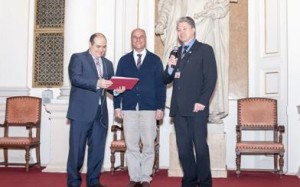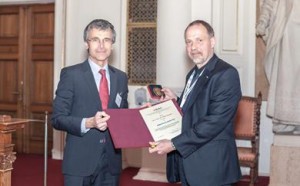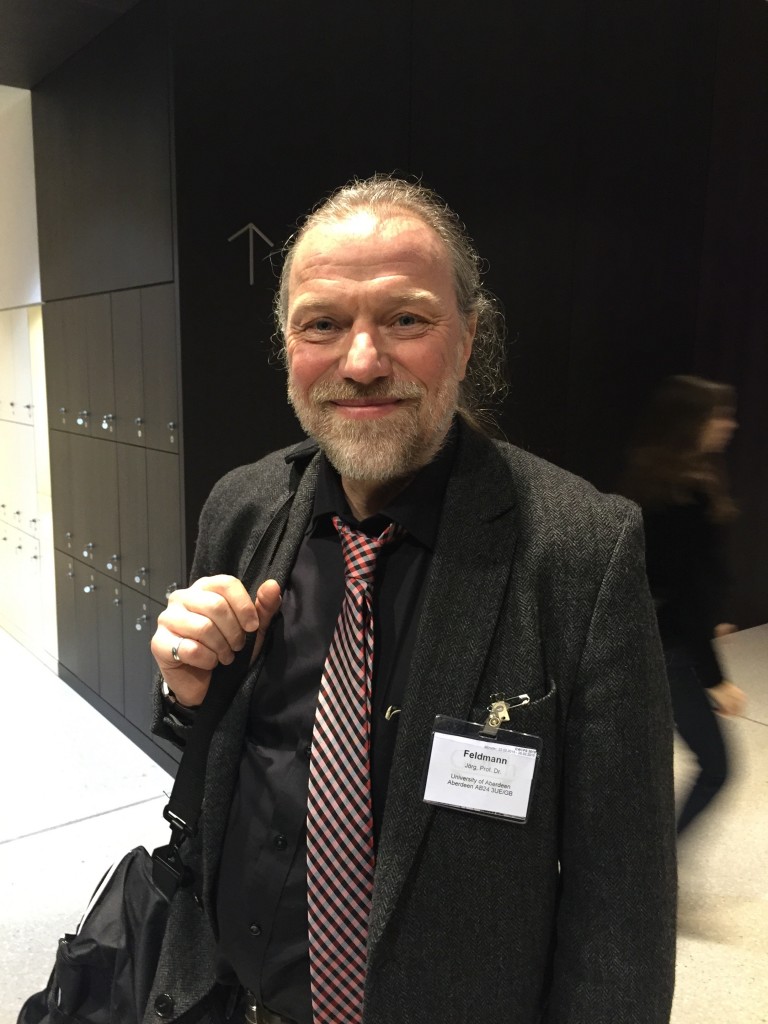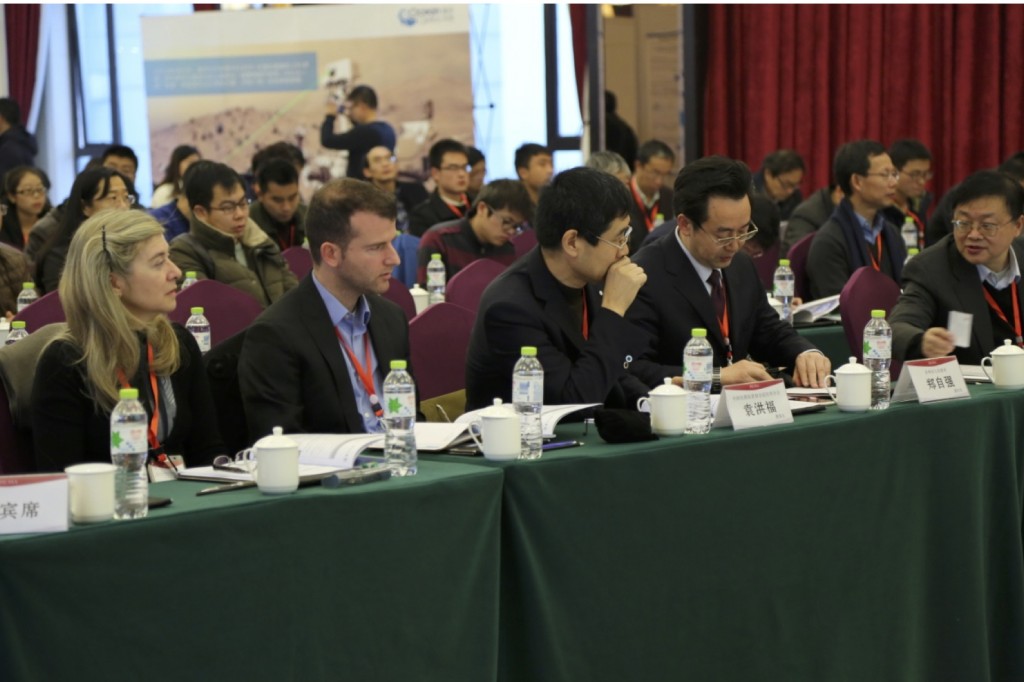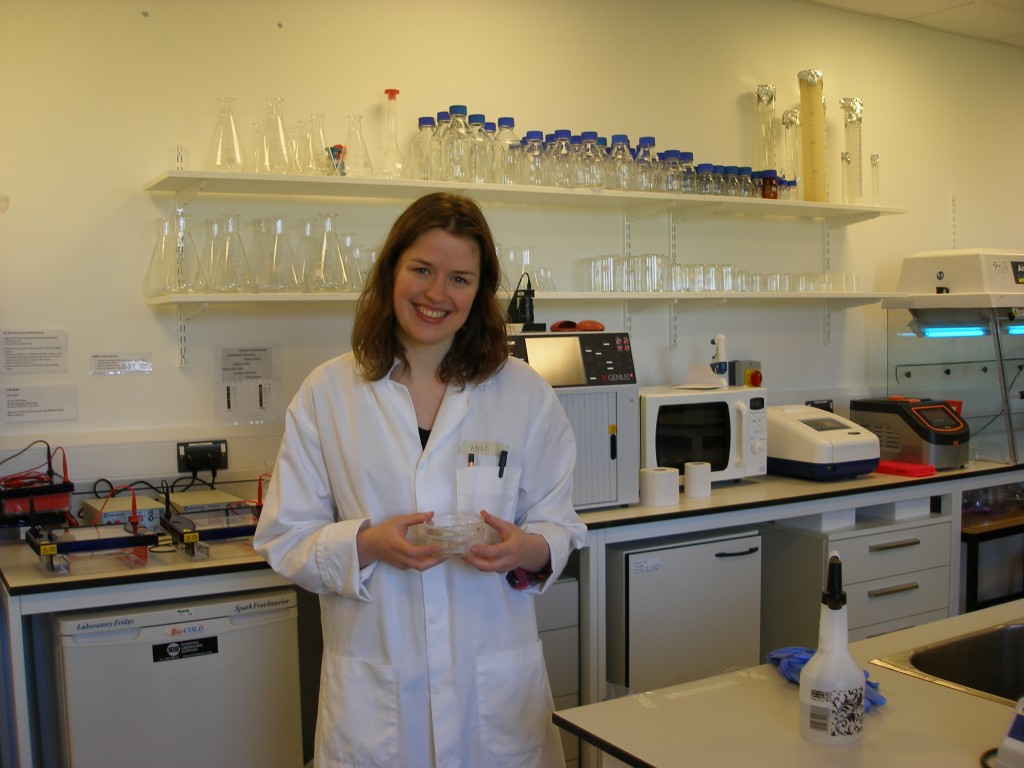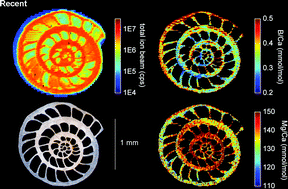Today we interview, Dr. David Douglas, a post-doc at LGC Limited, currently working in the group of Dr. Heidi Goenaga-Infante.
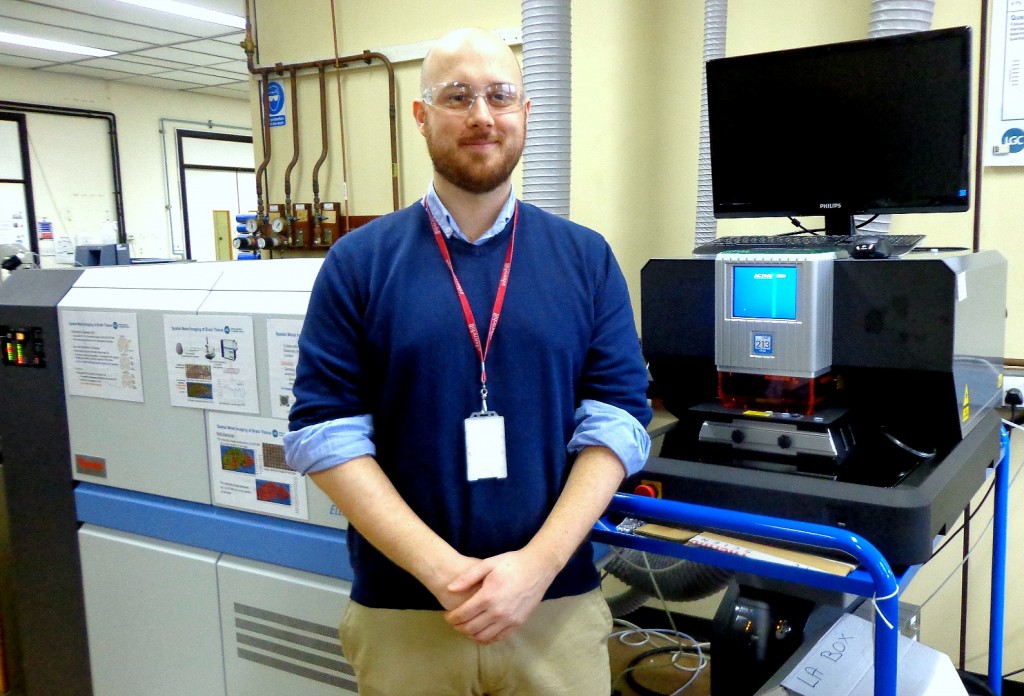
David in his lab
Who or what inspired you to become a scientist?
From an early age I was fascinated by how the world around me worked and would often take things apart to understand the processes that culminated in an output or action. I received a microscope one Christmas from my parents, which populated more questions than it answered and fueled my need to improve my understanding. Two inspirational Chemistry teachers, Mr Gordon Waston-Broughton and Mr Tim Rutherford, kept this need burning and encouraged me to study Chemistry at Plymouth University. That is where my first research project began under the keen eyes of Dr Michael Foulkes and Dr Andrew Fisher. I enjoyed research so much I decided I had to attempt a PhD. I was lucky enough that such a position had become available in Prof. Barry Sharp and Dr Helen Reid’s group at Loughborough University, where I once again began to deconstruct things to understand how they worked. By sharing in the passion these people have for science, I have been inspired to follow it as a career and a hobby.
Why did you choose your research group/University and what factors influenced your choice?
I currently work within the Inorganic Research Team of the Science and Innovation section at LGC Ltd, under the watchful eyes of Heidi Goenaga-Infante. My first experience of the group was through a joint Knowledge Transfer Project (KTP) with Loughborough University focusing on improving metrological bio-imaging by LA-ICP-MS.
LGC is a commercial entity that is home to the UK’s designated National Measurement Institute (NMI) for Chemical and Biological Measurement. As such employees are exposed to a large range of research topics; ranging from large European funded measurement projects (EMPIR) and international comparison studies (CCQM), to the smaller commercial external and internal projects. During my KTP I was exposed to the plethora of instrumentation and collaboration at LGC and the potential for metrological research in solid sample analysis. This combined with the range of applications drew me to my current position.
Another big part of why I chose LGC was down to the group of people I work with. They come from a range of cultural backgrounds and scientific experiences; in an environment where scientific discussion is encouraged, this makes for some motivating and inspiring ideas. Without their support my job would be impossible.
Can you explain a bit the purpose of your current research activities?
My current research activities focus on improving metrology of LA-ICP-MS analysis and the traceability of these measurements.
I am currently working with my colleagues on the development of new calibration strategies to determine localised metal concentrations in tissues; a topic that has received a lot of interest in the research community and something of a personal interest. We are focusing on improving the uncertainty associated with these measurements and thus enhance spatial discrimination of analyte concentration. This is important for applications such as the investigation of iron’s association with Alzheimer’s disease and for tracking of localised cancer treatments.
I am exposed to a diverse range of applications and new projects we are about to undertake include feasibility studies of LA-ICP-MS sampling for complex matrices, and the development of rapid and robust screening methods for health. Each new area brings new challenges to develop robust and traceable measurement methods and are driven by industry needs.
How is a typical day in your lab?
For an experimental day I tend to begin by configuring our LA-ICP-MS instrumentation (NWR213 coupled to either our Element 2, 8800 or one of our 7700s) for the particular application being run that week e.g. wet plasma, online addition etc. I switch all the instruments on and let them settle for an hour. This gives me enough time to head to the office and grab a cup of coffee and sort through a mountain of e-mails. I’ll then setup the experiment for the day.
I spend a considerable amount of time in the office working on data reduction and interpretation of the results from the experiments. This work is often broken up by some of my other requirements of laboratory organization, project planning and instrumentation acquisition. I also have many opportunities to discuss other project topics and science with my colleagues.
What common activities are organized in your research group?
Many people from the Inorganic, Organic and Purity teams will take coffee at 10:00 and 15:00. Almost all of the section will attend this event at 10:00 on a Friday. This is our unofficial cake day, where one member of the section is volunteered each week to bake a treat of their choice. A more complicated rule also exists in that if the pay day for that month is a Friday then we head out for lunch to enjoy an ‘Open Burger’ from the local pub. A small group of us also head to the pub on a Friday evening.
Inorganic team meetings are a monthly occurrence and are used to discuss company business, conferences, papers, projects and laboratory issues. We also have a presentation from one member of the group on their research, work or a new piece of instrumentation they are using. We also attend monthly science meetings for the section (comprised of Inorganic, Organic, Purity and Reference Materials) where two presentations are given from any team. Annually we have a Science and Social day dedicated to improving divisional communication and understanding. This brings together the Science and Innovation division under the Government Chemist.
What app/programs do you typically use?
I regularly use the Microsoft Office suite of programs, such as Excel and Word; I am also a keen user of Visio to create diagrams for papers, presentations or patents.
LGC has begun to adopt OneNote as a means to compliment the conventional lab book; with talk of trialing tablets in the lab to replace lab books completely. The suitability of this program for sharing of information has really shone through when multiple people are collaborating on the same project.
I use Igor Pro, and the add-in Iolite, to reduce my LA data. I find the graphical interface, and identification of transient data as a wave useful in processing. The support from the developers and community is fantastic; they are patient and efficient in helping those with limited coding experience like me. Images can be generated easily using Iolite from ICP data and laser log files.
How do you search for scientific information? How do you manage your bibliography?
I often use Google Scholar and ScienceDirect when searching for information. I also use RSS feeds to keep me updated on highlighted releases from the major journals in my field.
I download papers and arrange them into folders with descriptive headings; sub-folders are used to provide further description. Information is collated using the reference manager Mendeley (freeware). As the program is free I can continue to use it if I move from one institute to another, and the annotation/key word functions are useful.
What are your views on JAAS? Which type of articles do you prefer? Do you miss some content?
JAAS is one of the important journals in my field of research. I have published in JAAS and found the process intuitive; whilst the peer review process provides vital constructive comments.
I enjoy the diversity of the articles published in JAAS, and particularly enjoy those that discuss new instrumental developments.
What do you like and dislike the most about your work?
There are many aspects of my job that I like, however the one that ranks highest for me is the group of people I get to work with. The cultural diversity makes for a good social environment but their scientific expertise makes for a great learning environment.
As this is a commercial environment we are limited by the time we can dedicate to certain activities, meaning that I cannot spend a day or two investigating something strange I have observed, no matter how much I want to. However this does mean that I need to plan my work carefully and ensure maximum ulitlisation/efficiency.
I particularly enjoy the wide range of instrumentation that I have access to, whether this is on site or through collaboration with other institutes and universities.
What do you expect to be doing in 5 years time?
I would be happy to remain in my current employment as I can see many emerging opportunities within LGC. I also enjoy the projects and work that LGC undertake and feel that I can drive the solid sampling capability into new and interesting areas, whilst obtaining a vast amount of experience.
What do you enjoy doing when you are not in the lab?
I have many hobbies outside of my research and work; I believe it is important to keep the mind and body active with a variety of pastimes. When the weather is good I enjoy fishing, walking and photography and for when it is not so good (a common situation in UK) I have taken up woodworking. This has given me the pleasure of building toys and decorations for our first child.
Thanks a lot, David! Have a look at some recent work published by David in JAAS
Jennifer O’Reilly, David Douglas, Julian Braybrook, P.-W. So, Eva Vergucht, Jan Garrevoet, Bart Vekemans, Laszlo Vincze and Heidi Goenaga-Infante
J. Anal. At. Spectrom., 2014,29, 1378-1384
DOI: 10.1039/C4JA00002A, Paper
Comments Off on The Next Generation- An Interview with David Douglas
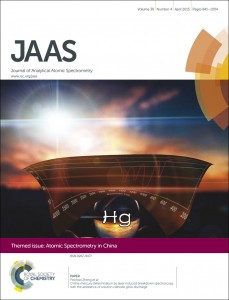 Will you be joining us in Xiamen later this month?
Will you be joining us in Xiamen later this month?











